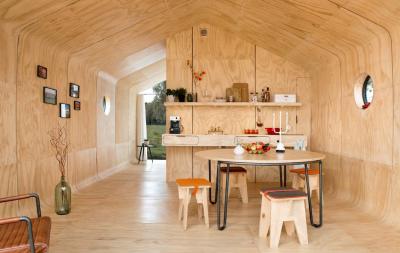

by Alexa Erickson, Collective Evolution
Tiny homes have become a social movement we can’t ignore. People all over the world are choosing to downsize the space they live in for a happier life.
In the U.S., for instance, the typical American home is around 2,600 square feet, but the typical tiny home is only between 100 and 400 square feet. They come in all shapes, sizes, and forms, but they all have one thing in common: they allow simpler living in a smaller, more efficient environment.
People have joined this movement for many reasons, whether it be concerns over the environment or their own finances, or the desire for more time and freedom. Most Americans spend 1/3 to 1/2 of their income on their homes, which means they spend 15 years working just to pay for it. This has caused 76 percent of Americans to live paycheck to paycheck. But for what? People who turn to this movement are done trying to prove themselves. They just just want a lifestyle that can make them feel good from the inside out.
The Cardboard Home
As mentioned above, tiny homes come in many forms. But have you hard of one made out of cardboard? While most people wouldn’t think this type of material to be suitable for building a comfortable and safe abode, award winning architects have discovered how to use it to produce remarkably sturdy and reliable shelters. Dutch design studio Fiction Factory has created a design for a tiny “microhome” using cardboard. Complete with a multitude of applications such as disaster relief, they claim it can last up to 100 years.
Called the Wikkelhouse, or “wrapper house,” the home is made of tough corrugated cardboard panels that adhere to each other with a non-toxic and environmentally-friendly glue.
How It Works
Easy And Eco-Friendly
This design makes way for an almost infinite number of layouts and a variety of sizes. The assembly of the home takes a mere day or two to complete, and the modules can be transported almost anywhere to be reused. They are also mostly recyclable.
Windows can be added on wherever you so please, and different areas such as a kitchen, bathroom and shower can be included using “smart home-segments.” The interiors are completed with plywood panelling for the walls to provide a naturally-minimalistic atmosphere.

